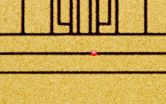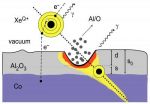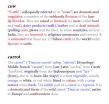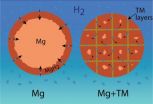(Press-News.org) AUDIO:
This audio file is a brief interview with MIABE coauthors Sandra Orchard, John Overington, Dominic Clark and Christoph Steinbeck of the EMBL-European Bioinformatics Institute. They briefly discuss the potential impact...
Click here for more information.
An international consortium of pharmaceutical companies, public and commercial data providers and academic groups has agreed on a new standard for describing the effect of a compound on a biological entity. Published in Nature Reviews Drug Discovery, the Minimum Information about a Bioactive Entity (MIABE) standard makes it possible to enhance the interchange of public data on drug discovery success and attrition.
Every day, pharma, biotech and academic groups generate enormous quantities of data about the biological properties of molecules such as drugs, pesticides and food additives. However, not all useful data are reported. This can lead to fruitless repetition of work, wasting time, energy and resources.
A deeper understanding of what makes successful drugs work can be gained by putting together data from a large number of drug discovery programmes. But to analyse these data properly, they need to be comparable. At present, crucial data are often missing from the published literature or are reported in an unstructured format.
MIABE reporting guidelines will allow the scientific community to capture more information about bioactive compounds, and to use that information for better design.
"We hope that MIABE will make possible an order-of-magnitude increase in the amount of data available for analysis," explained Dr John Overington, who heads the ChEMBL group at the European Molecular Biology Laboratory's European Bioinformatics Institute (EMBL-EBI). "Experience with other standards has shown that as more groups come to adopt them, the amount of useable data available to researchers snowballs."
"The increased availability of standards-compliant data will help companies to streamline their decision-making processes," said Dr Dominic Clark, who coordinates the Industry Programme at EMBL-EBI. "Industry is becoming increasingly reliant on data in the public domain. Having a set of principles and standards will make data integration simpler and help to control costs."
"This new standard will bring us a wealth of well curated data about the biological targets of bioactive molecules – a very timely initiative for the EMBL-EBI's current expansion in the area of metabolism and metabolomics," added Dr Christoph Steinbeck, who heads the cheminformatics team at EMBL-EBI.
MIABE is the result of a precompetitive project that originated in the EMBL-EBI Industry Programme. The ideas were originally developed in a series of drug-discovery research workshops, and the outcome will benefit industrial and academic communities alike.
###
Source article: Orchard, S., Al-Lazikani, B., Bryant, S., et al. (2011) Minimum Information About a Bioactive Entity (MIABE). Nat Rev Drug Discov 10, 661-669. Published online 31 August. doi:10.1038/nrd3503. http://www.nature.com/nrd/journal/v10/n9/abs/nrd3503.html
About EMBL
The European Molecular Biology Laboratory is a basic research institute funded by public research monies from 20 member states (Austria, Belgium, Croatia, Denmark, Finland, France, Germany, Greece, Iceland, Ireland, Israel, Italy, Luxembourg, the Netherlands, Norway, Portugal, Spain, Sweden, Switzerland and the United Kingdom) and associate member state Australia. Research at EMBL is conducted by approximately 85 independent groups covering the spectrum of molecular biology. The Laboratory has five units: the main Laboratory in Heidelberg, and Outstations in Hinxton (the European Bioinformatics Institute), Grenoble, Hamburg, and Monterotondo near Rome. The cornerstones of EMBL's mission are: to perform basic research in molecular biology; to train scientists, students and visitors at all levels; to offer vital services to scientists in the member states; to develop new instruments and methods in the life sciences and to actively engage in technology transfer activities. Around 190 students are enrolled in EMBL's International PhD programme. Additionally, the Laboratory offers a platform for dialogue with the general public through various science communication activities such as lecture series, visitor programmes and the dissemination of scientific achievements. www.embl.org
About EMBL-EBI:
The European Bioinformatics Institute (EBI) is part of the European Molecular Biology Laboratory (EMBL) and is located on the Wellcome Trust Genome Campus in Hinxton near Cambridge (UK). The EBI grew out of EMBL's pioneering work in providing public biological databases to the research community. It hosts some of the world's most important collections of biological data, including DNA sequences (ENA), protein sequences (UniProt), animal genomes (Ensembl), three-dimensional structures (the Protein Databank in Europe), data from gene expression experiments (ArrayExpress), protein-protein interactions (IntAct) and pathway information (Reactome). The EBI hosts several research groups and its scientists continually develop new tools for the biocomputing community. www.ebi.ac.uk
MIABE standard opens up new opportunities in drug discovery
Minimum information about a bioactive entity
2011-09-01
ELSE PRESS RELEASES FROM THIS DATE:
ESC Congress 2011 highlights
2011-09-01
Paris, France, 31 August 2011: "The ESC Congress 2011 in Paris has been a record breaking event" said Prof Michael Böhm, chairman of the ESC Congress Programme Committee. "With a total attendance of 32 946 participants, this is our largest congress ever. We are especially pleased to see that more and more delegates are coming from outside Europe. Large delegations came from Brazil, Japan, China and India this year," said Prof Böhm.
"The quality of the scientific content at the ESC Congress attracts more and more participants each year," explained Prof Böhm. "The medical ...
Researcher identifies nearly 100 studies supporting use of thermal ablation to treat lung cancer
2011-09-01
(Providence, R.I.) – The journal Radiology will publish in its September issue an article written by Damian E. Dupuy, M.D., director of tumor ablation at Rhode Island Hospital, supporting the use of ablation procedures for the treatment of lung cancer. The article, "Image-guided Thermal Ablation of Lung Malignancies," reviews the results of nearly 100 studies conducted between 1991 and 2011 that conclude that image-guided ablation for lung cancer is a successful alternative for patients who cannot withstand surgery due to advanced age or medical comorbidities.
Percutaneous ...
Successful rainwater harvesting systems should combine new technology with old social habits
2011-09-01
As a crippling drought grips much of the Southern and Southwestern United States, the population continues to grow and water resources become scarcer. One way to address the problem is by a combination of modern engineering and ancient social principles, outlined in a new paper on rainwater harvesting that will be presented at the 2011 ASME International Mechanical Engineering Congress and Exposition.
Author John Whear, biomedical engineer at the Cancer Therapy & Research Center at The University of Texas Health Science Center at San Antonio, examines how to manage rainwater ...
NIST achieves record-low error rate for quantum information processing with one qubit
2011-09-01
Thanks to advances in experimental design, physicists at the National Institute of Standards and Technology (NIST) have achieved a record-low probability of error in quantum information processing with a single quantum bit (qubit)—the first published error rate small enough to meet theoretical requirements for building viable quantum computers.
A quantum computer could potentially solve certain problems that are intractable using today's technology, even supercomputers. The NIST experiment with a single beryllium ion qubit, described in a forthcoming paper,* is a milestone ...
Researchers expand capabilities of miniature analyzer for complex samples
2011-09-01
It's not often that someone can claim that going from a positive to a negative is a step forward, but that's the case for a team of scientists from the National Institute of Standards and Technology (NIST) and private industry. In a recent paper,* the group significantly extended the reach of their novel microfluidic system for analyzing the chemical components of complex samples. The new work shows how the system, meant to analyze real-world, crude mixtures such as dirt or whole blood, can work for negatively charged components as well as it has in the past for positively ...
Ion armageddon: Measuring the impact energy of highly charged ions
2011-09-01
Much like a meteor impacting a planet, highly charged ions hit really hard and can do a lot of damage, albeit on a much smaller scale. And much like geologists determine the size and speed of the meteor by looking at the hole it left, physicists can learn a lot about a highly charged ion's energy by looking at the divots it makes in thin films.
Building upon their work for which they were recently awarded a patent,* scientists at the National Institute of Standards and Technology (NIST) and Clemson University have measured the energy of highly charged ion impacts on a ...
Solar industry responsible for lead emissions in developing countries
2011-09-01
Solar power is not all sunshine. It has a dark side—particularly in developing countries, according to a new study by a University of Tennessee, Knoxville, engineering professor.
A study by Chris Cherry, assistant professor in civil and environmental engineering, found that solar power heavily reliant on lead batteries has the potential to release more than 2.4 million tons of lead pollution in China and India.
Lead poisoning causes numerous adverse health effects, including damage to the central nervous system, the kidneys, the cardiovascular system, and the reproductive ...
Word association: Princeton study matches brain scans with complex thought
2011-09-01
In an effort to understand what happens in the brain when a person reads or considers such abstract ideas as love or justice, Princeton researchers have for the first time matched images of brain activity with categories of words related to the concepts a person is thinking about. The results could lead to a better understanding of how people consider meaning and context when reading or thinking.
The researchers report in the journal Frontiers in Human Neuroscience that they used functional magnetic resonance imaging (fMRI) to identify areas of the brain activated when ...
Iron 'Veins' Are Secret of Promising New Hydrogen Storage Material
2011-09-01
With a nod to biology, scientists at the National Institute of Standards and Technology (NIST) have a new approach to the problem of safely storing hydrogen in future fuel-cell-powered cars. Their idea: molecular scale "veins" of iron permeating grains of magnesium like a network of capillaries. The iron veins may transform magnesium from a promising candidate for hydrogen storage into a real-world winner.
Hydrogen has been touted as a clean and efficient alternative to gasoline, but it has one big drawback: the lack of a safe, fast way to store it onboard a vehicle. ...
Registration Opens September 1 for 4th Annual Renton FilmFrenzy, a 50-Hour Filmmaking Competition with $1,700 in Cash Prizes; Filmmakers will Take Over Renton from Oct. 7-9
2011-09-01
It will be "lights, camera, action" in Renton from October 7-9, when aspiring, ahead of the curve filmmakers take over the city for the fourth annual Renton FilmFrenzy, a 50-hour filmmaking competition. Last year, 25 filmmaking teams competed for $1,700 in cash prizes and the coveted Curvee Awards.
"Thanks to our partnerships with SIFF, Reel Grrls, theFilmSchool, area filmmaking programs, and the Renton Arts Commission, the Renton FilmFrenzy continues to expand and has become an integral part of the growing and strong Renton arts community," said ...
LAST 30 PRESS RELEASES:
Norbert Holtkamp appointed director of Fermi National Accelerator Laboratory
New agentic AI platform accelerates advanced optics design
Biologists discover neurons use physical signals — not electricity — to stabilize communication
Researchers discover that a hormone can access the brain by hitchhiking
University of Oklahoma researcher awarded funding to pursue AI-powered material design
Exploring how the visual system recovers following injury
Support for parents with infants at pediatric check-ups leads to better reading and math skills in elementary school
Kids’ behavioral health is a growing share of family health costs
Day & night: Cancer disrupts the brain’s natural rhythm
COVID-19 vaccination significantly reduces risk to pregnant women and baby
The role of vaccination in maternal and perinatal outcomes associated with COVID-19 in pregnancy
Mayo Clinic smartwatch system helps parents shorten and defuse children's severe tantrums early
Behavioral health spending spikes to 40% of all children’s health expenditures, nearly doubling in a decade
Digital cognitive behavioral treatment for generalized anxiety disorder
Expenditures for pediatric behavioral health care over time and estimated family financial burden
Air conditioning in nursing homes and mortality during extreme heat
The Alps to lose a record number of glaciers in the next decade
What makes a good proton conductor?
New science reporting guide published for journalists in Bulgaria
New international study reveals major survival gaps among children with cancer
New science reporting guide published for journalists in Turkey
Scientists develop a smarter mRNA therapy that knows which cells to target
Neuroanatomy-informed brain–machine hybrid intelligence for robust acoustic target detection
Eight SwRI hydrogen projects funded by ENERGYWERX
The Lundquist Institute and its start-up company Vitalex Biosciences Announces Strategic Advancement of Second-Generation fungal Vaccine VXV-01 through Phase 1 Trials under $40 Million Competitive Con
Fine particles in pollution are associated with early signs of autoimmune disease
Review article | Towards a Global Ground-Based Earth Observatory (GGBEO): Leveraging existing systems and networks
Penn and UMich create world’s smallest programmable, autonomous robots
Cleveland researchers launch first major study to address ‘hidden performance killer’ in athletes
To connect across politics, try saying what you oppose
[Press-News.org] MIABE standard opens up new opportunities in drug discoveryMinimum information about a bioactive entity




